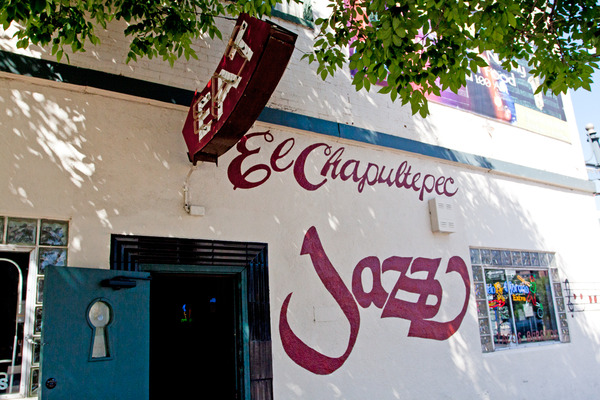The Local newsletter is your free, daily guide to life in Colorado. For locals, by locals.
The first thing Jerry Krantz ever said to me was, “Get the hell out of my bar!”
I was 18; my friends and I were wandering around what was the bad part of Denver. Back then, everything northeast of 18th Street consisted of dive bars, flophouses, pawn shops, and empty storefronts. Hoboes still hung out in the rail yards and camped in the brush along the Platte. The age of LoDo redevelopment was decades away.

We heard the sound of jazz coming out of the scruffy-looking, neon-bracketed entryway at 1962 Market Street and walked in. El Chapultepec was—and still is—an L-shaped, low-ceilinged, womblike structure with an elaborate bar, flanked by a rank of banquettes. The floors were tiled chessboard black and white, and the space between the booths and the bar was narrow. The floor was always packed with standees, and the barmaids wrassled their way back and forth to the booths with drinks. At the end of one arm of the L was what must be the world’s tiniest performing area.
For the first time in my life, I saw and heard people making spontaneous music. We had been “exposed” to jazz in school, but that was a condescending, boring exercise that inspired nobody. This was exciting, though. We pushed our way into the back of the crowd. The owner, Krantz, however, had a psychic sense of how old someone was. We hadn’t the guile to try to dress older or the balls to dispute him. We got the hell out of his bar and, like many other overflow patrons, stood out on the sidewalk, listening.
El Chapultepec is housed in a building that is more than 100 years old. The structure has an unsavory early history as a sometime haven for a “floating brothel” named the Silver Dollar Hotel (presumably the cost of a good time back then). On July 4, 1933, Tony Romano opened Tony’s Restaurant there. Krantz married Tony’s daughter Alice, and started working at the eatery in 1958. He took over the place in 1968, and, after a time, began offering free nightly jazz. It’s been much the same since, and now Krantz’s daughter Angela runs the place.
Krantz passed away Tuesday morning, and most of the copy about him emphasizes his crustiness. Indeed, he was one tough customer. However, he loved jazz and wanted us to love it, too. When my friends and I came back to hear the music the next time, he gruffly told us we could sit in the back room and listen, where underagers were welcome.
There were some rickety wooden booths there, next to the noisy kitchen, and we spent many, many nights eating Krantz’s greasy Mexican food, sipping Cokes, and dodging out of the way of the pool cues (improbably, a billiard table was crammed into the center of the tiny space).
And we listened. Once again, stories tell of how “everyone” in jazz stopped in to the Pec to perform, including Sinatra, Bennett, and my hero, Artie Shaw. I never ran into a one of them. Instead, I heard the locals, the regulars, those without a big name or following who simply, night after night, explored the music and made fascinating, beautiful improvisations. This taught me more about jazz and the strangely disciplined indiscipline of art than anything else has.
Now, I’m a graybeard who writes about a lot of things, including jazz. Hopefully, I have sent some customers and potential fans his way. You could do much worse than to spend a night standing in the crowd on the parquet floor, listening to the music. Thanks, Jerry.
—Image by Jinsan Lee








